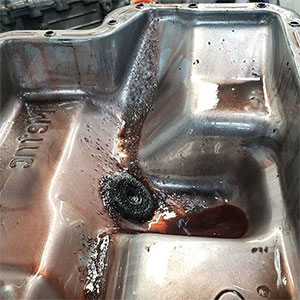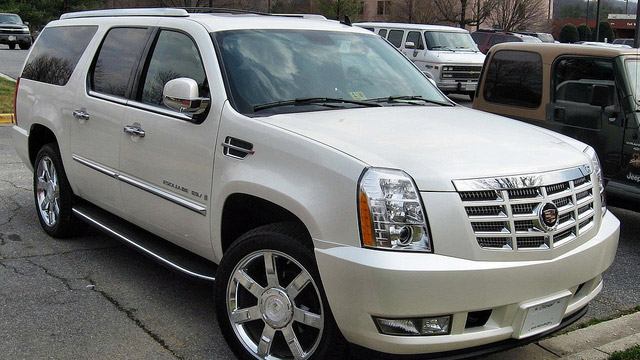Posted on 7/25/2024

Transmission debris is the accumulation of small particles, metal shavings, and other contaminants that can be found in a vehicle's transmission fluid. This debris can be a sign of wear and tear on the transmission system and can lead to serious issues if left unaddressed. Transmission debris can come from several sources, including normal wear and tear on the transmission system, poor maintenance, and internal damage to the transmission. Over time, the small metal particles that result from the friction of the transmission's moving parts can mix with the transmission fluid and accumulate in the transmission's filter and pan. When transmission debris accumulates in the transmission, it can cause a range of problems, including slipping gears, transmission overheating, and increased wear on the transmission components. In severe cases, transmission debris can even cause the transmission to fail completely, resulting in costly repairs or the need for a complete t ... read more
Posted on 7/4/2024

The 4th of July is a time to celebrate our nation’s independence with family, friends, and festivities. As we come together to enjoy fireworks, barbecues, and road trips, it's essential to ensure your vehicle is ready for the journey. At St. George Transmission, we’re here to help you have a fun and safe Independence Day! Here are some tips to keep your car in top shape and make the most of this patriotic holiday. 1. Prep Your Car for Road Trips Planning a road trip to visit family or explore the great outdoors? Before you hit the road, make sure your car is ready for the journey: Check Fluids: Ensure all fluids, including oil, coolant, and windshield washer fluid, are at the proper levels. Inspect Tires: Check the tire pressure and tread depth. Properly inflated and well-maintained tires are crucial for safety and fuel efficiency. Test Your Battery: Hot summer temperatures can take a toll on your ... read more
Posted on 7/1/2024

A vehicle's transmission is an essential component that plays a crucial role in transferring power from the engine to the wheels. The transmission's primary function is to provide the right amount of torque and power to the wheels to ensure smooth and efficient vehicle operation. A transmission consists of several key components, including gears, shafts, bearings, and other parts that work together to transmit power from the engine to the wheels. The gears in the transmission are responsible for changing the gear ratio between the engine and the wheels, allowing the vehicle to operate at different speeds and power levels. There are two primary types of transmissions: manual and automatic. In a manual transmission, the driver is responsible for shifting gears by using a clutch pedal and gearshift lever. The clutch pedal disengages the engine from the transmission, allowing the driver to shift gears manually. In contrast, an automatic transmission uses a hydr ... read more
Posted on 7/1/2024

The 6L80e and 6L90e are popular automatic transmissions used in many GM vehicles, including trucks, SUVs, and some performance vehicles. While these transmissions offer several benefits, such as improved fuel efficiency and smoother shifting, there are some common issues that owners may experience. Here's what you need to know about the most common 6L80e and 6L90e transmission issues. One of the most common issues with these transmissions is hard shifting, which can occur during gear changes. This can happen when the transmission is cold, and the fluid has not yet warmed up, or it can happen when there is a problem with the transmission control module or shift solenoids. In some cases, the issue may be resolved with a software update, while in other cases, the transmission may require a rebuild or replacement. Another common issue with the 6L80e and 6L90e is transmission slipping, which occurs when the transmission fails to engage or disengage properly. This can cause ... read more